Corporate bylaws are a set of rules and regulations that dictate the internal management and functioning of a corporation. These bylaws provide a framework for the governance of the corporation, including the responsibilities of the board of directors, the duties of the officers, and the procedures for holding shareholder meetings.
Corporate bylaws play a crucial role in ensuring that a corporation operates smoothly and efficiently, while also promoting accountability and transparency. By establishing clear guidelines and procedures, corporate bylaws help to protect the interests of the shareholders and other stakeholders, and provide a basis for resolving disputes.
Table of Contents
How Bylaws Work

Bylaws are a set of rules and regulations that govern the operation of an organization or group. They are created by the founding members of an organization and outline the purpose and structure of the organization, the rights and responsibilities of its members, and the procedures for decision-making and conflict resolution. Bylaws help to ensure that an organization operates in a fair and consistent manner, and can provide clarity and guidance to its members.
Corporate Bylaws Templates
Corporate bylaws templates are pre-designed documents that provide a structured format for creating the governing rules and regulations of a corporation. These templates offer a convenient and comprehensive way to establish the internal framework and operational procedures for the corporation, ensuring clarity and consistency in its governance.
Corporate bylaws templates typically include sections that address important aspects such as the purpose and objectives of the corporation, the roles and responsibilities of shareholders, directors, and officers, meeting procedures, voting requirements, financial management, and any additional provisions specific to the corporation’s needs. They may also incorporate sections for documenting amendments, indemnification, dispute resolution, and other legal requirements.
Using a corporate bylaws template helps corporations establish a clear and consistent set of rules and procedures that govern their operations and decision-making processes. The template provides a structured format that simplifies the process of creating the bylaws and ensures that all necessary details are properly documented and communicated.
Here are the key elements of how bylaws work:
Purpose and structure: Bylaws typically start with a statement of the organization’s purpose and mission, as well as its legal structure and any relevant laws or regulations that govern its operation. This section may also include information about the organization’s governance structure, such as the roles and responsibilities of the board of directors, officers, and committees.
Membership: The bylaws will usually outline the criteria for membership in the organization, as well as the rights and responsibilities of members. This may include details about how members are admitted or removed, how meetings are conducted, and how voting is conducted.
Decision-making: Bylaws provide procedures for decision-making within the organization, including how meetings are conducted and how decisions are made. This may include rules for quorum, voting, and proxy voting, as well as guidelines for how to handle conflicts of interest.
Amendments: Bylaws can be amended or revised as necessary, usually through a specified process outlined in the bylaws themselves. This may require a certain number of votes or a specific process for proposing and reviewing changes to the bylaws.
Importance of corporate bylaws
Corporate bylaws are an important legal document that outlines the rules and procedures for the operation of a corporation. Here are some of the key reasons why corporate bylaws are important:
Legal compliance: Corporate bylaws help ensure that the corporation operates in compliance with the law. They outline the corporation’s legal structure, procedures for meetings and decision-making, and other important legal requirements.
Clarity and consistency: Bylaws provide a clear and consistent framework for how the corporation operates, including the roles and responsibilities of officers and directors, the procedures for electing directors and officers, and the process for making important decisions.
Protection of shareholders and stakeholders: Bylaws can help protect the rights and interests of shareholders and other stakeholders. They may outline the procedures for voting and the process for appointing or removing directors and officers.
Organizational structure: Bylaws can help establish a clear organizational structure and define the responsibilities of each member of the corporation. This can help ensure that everyone involved in the corporation understands their role and what is expected of them.
Flexibility: Corporate bylaws can be amended as needed to reflect changes in the corporation or to adapt to new circumstances. This allows the corporation to remain flexible and responsive to changing needs or circumstances.
What to include in your corporate bylaws?
Corporate bylaws are an important legal document that govern the day-to-day operations of a corporation. Here are some of the key items that should be included in corporate bylaws:
Corporate structure: The bylaws should outline the structure of the corporation, including the number of directors, the roles and responsibilities of officers, and how the corporation will be managed.
Meetings: The bylaws should specify the rules and procedures for meetings, including how often meetings will be held, how notice will be given, and how votes will be conducted.
Decision-making: The bylaws should outline the decision-making process for the corporation, including how decisions are made, who is authorized to make decisions, and how conflicts of interest will be addressed.
Shareholders: The bylaws should specify the rights and responsibilities of shareholders, including how shares are issued, how voting rights are determined, and how shareholder meetings are conducted.
Amendments: The bylaws should specify the procedures for amending the bylaws, including how amendments are proposed, how notice is given, and how votes are conducted.
Dissolution: The bylaws should include provisions for how the corporation will be dissolved if it is no longer needed.
Indemnification: The bylaws should specify how officers and directors will be indemnified and protected from liability.
Miscellaneous provisions: The bylaws may also include other provisions, such as how the corporation will handle stock options or how disputes will be resolved.
Where do I find Corporate Bylaws?
Corporate bylaws are typically created by the founders of a corporation and are adopted at the time of incorporation. They are a legal document and should be kept in a safe and accessible location.
If you are a shareholder or director of a corporation and need a copy of the bylaws, you can request them from the corporation’s registered agent or corporate secretary. The bylaws may also be available on the corporation’s website, if it has one.
If you are looking to start a corporation and need to create bylaws, you can consult with an attorney or use a template. Many states provide sample bylaws or templates that can be used as a starting point. You can also find templates and sample bylaws online, but it is important to make sure that they are appropriate for your specific state and situation.
Corporate Bylaws vs. Articles of Incorporation
Corporate bylaws and articles of incorporation are both important legal documents that are required when forming a corporation, but they serve different purposes.
Articles of incorporation are the legal document that creates a corporation and sets out its basic information, such as the name of the corporation, the purpose of the corporation, the location of the corporation, the number of shares of stock that the corporation is authorized to issue, and the names and addresses of the initial directors. Articles of incorporation are typically filed with the state government and become part of the public record.
Corporate bylaws, on the other hand, are a set of rules and procedures that govern the day-to-day operation of the corporation. Bylaws outline the internal workings of the corporation, such as how the corporation is managed, how directors are elected, how meetings are conducted, and how decisions are made. Bylaws are typically adopted by the corporation’s board of directors and are not filed with the state government, although they must be made available to shareholders upon request.
In summary, the key differences between corporate bylaws and articles of incorporation are:
Articles of incorporation are the legal document that creates the corporation, while bylaws outline the internal workings of the corporation.
Articles of incorporation set out basic information about the corporation and are filed with the state government, while bylaws are adopted by the corporation’s board of directors and are not filed with the state government.
Articles of incorporation become part of the public record, while bylaws are typically only available to shareholders upon request.
How To Write Corporate Bylaws
Writing corporate bylaws is an important part of forming a corporation. The bylaws are a set of rules and procedures that govern the day-to-day operations of the corporation, and they are an essential tool for ensuring that the corporation runs smoothly and effectively. Here is a step-by-step guide to help you write corporate bylaws:
Step 1: Determine the Structure of the Corporation
Before you begin drafting your bylaws, it is important to determine the structure of your corporation. This includes deciding how many directors you will have, what roles and responsibilities each officer will have, and how the corporation will be managed.
Step 2: Define the Powers of the Board of Directors
The board of directors is responsible for overseeing the management of the corporation, and the bylaws should define the powers of the board. This includes determining how many directors will be on the board, how they will be elected or appointed, how long their terms will be, and what their roles and responsibilities will be.
Step 3: Define the Powers of the Officers
The officers of the corporation are responsible for carrying out the day-to-day operations of the corporation, and the bylaws should define their powers and duties. This includes determining what officers will be appointed, how they will be elected or appointed, what their roles and responsibilities will be, and how they can be removed from office.
Step 4: Outline the Meeting Procedures
The bylaws should outline the procedures for conducting meetings of the corporation. This includes specifying how often meetings will be held, how notice will be given, how votes will be conducted, and what types of business can be transacted at meetings.
Step 5: Define the Decision-Making Process
The bylaws should outline the decision-making process for the corporation. This includes determining how decisions are made, who is authorized to make decisions, and how conflicts of interest will be addressed.
Step 6: Specify the Rights and Responsibilities of Shareholders
The bylaws should specify the rights and responsibilities of shareholders, including how shares are issued, how voting rights are determined, and how shareholder meetings are conducted.
Step 7: Outline the Procedures for Amending the Bylaws
The bylaws should specify the procedures for amending the bylaws. This includes determining how amendments are proposed, how notice is given, and how votes are conducted.
Step 8: Address Other Important Issues
The bylaws may also address other important issues, such as how the corporation will handle stock options or how disputes will be resolved.
Step 9: Review and Finalize the Bylaws
Once you have drafted your bylaws, it is important to review them carefully and make any necessary revisions. It is also a good idea to have an attorney review the bylaws to ensure that they are legally sound and appropriate for your specific situation. Once the bylaws are finalized, they should be adopted by the board of directors and kept on file with the corporation’s records.
In summary, the steps to write corporate bylaws are:
- Determine the structure of the corporation
- Define the powers of the board of directors
- Define the powers of the officers
- Outline the meeting procedures
- Define the decision-making process
- Specify the rights and responsibilities of shareholders
- Outline the procedures for amending the bylaws
- Address other important issues
- Review and finalize the bylaws
By following these steps, you can create a set of corporate bylaws that will help your corporation operate effectively and smoothly.
FAQs
Do all corporations need bylaws?
Yes, all corporations should have bylaws, regardless of their size or structure.
Are bylaws legally binding?
Yes, bylaws are legally binding and can be enforced by the courts.
Can the bylaws be amended?
Yes, the bylaws can be amended by the board of directors or shareholders, according to the procedures set forth in the bylaws.
Can the bylaws be customized to fit a specific corporation?
Yes, the bylaws should be customized to fit the specific needs of each corporation, and should be reviewed and updated as necessary.
Who should review the bylaws?
It is recommended to have an attorney review the bylaws to ensure they are legally sound and appropriate for the corporation’s specific needs.
What happens if the corporation does not have bylaws?
If the corporation does not have bylaws, it may be difficult to manage the day-to-day operations of the corporation, and there may be confusion or disputes over important issues. Additionally, the corporation may be in violation of state laws that require corporations to have bylaws.
What is an example of an S corporation bylaws?
An S corp bylaws example outlines things like: shareholders and shares, director and officer roles, meetings, voting procedures, indemnification, amendability, dispute resolution, dissolution terms, and more based on state laws.
Are bylaws required for a corporation in Illinois?
Yes, Illinois corporations are required to have bylaws under the state’s Business Corporation Act. Bylaws set out internal operating rules and must comply with IL laws.
Are bylaws required in Texas?
Yes, Texas corporations are required to adopt initial bylaws when incorporating. The bylaws contain governance rules and procedures per Texas corporate statutes. They can be amended later.
What are the bylaws of a New York corporation?
Under New York corporate law, bylaws outline internal affairs like shareholder rights, director duties, meetings, officer titles, voting, notices, records access, amendment procedures, and dissolution terms based on the NY Business Corporation Law.




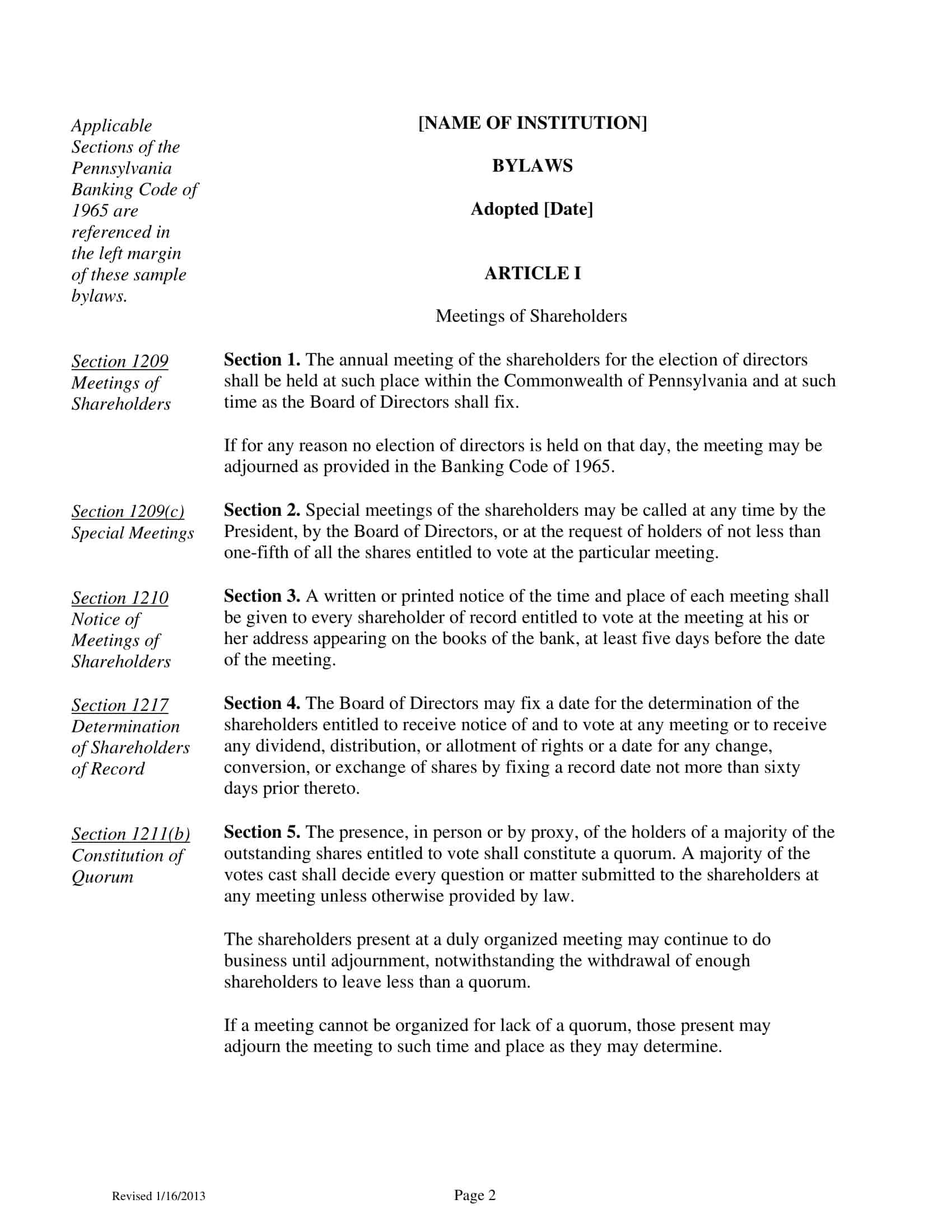















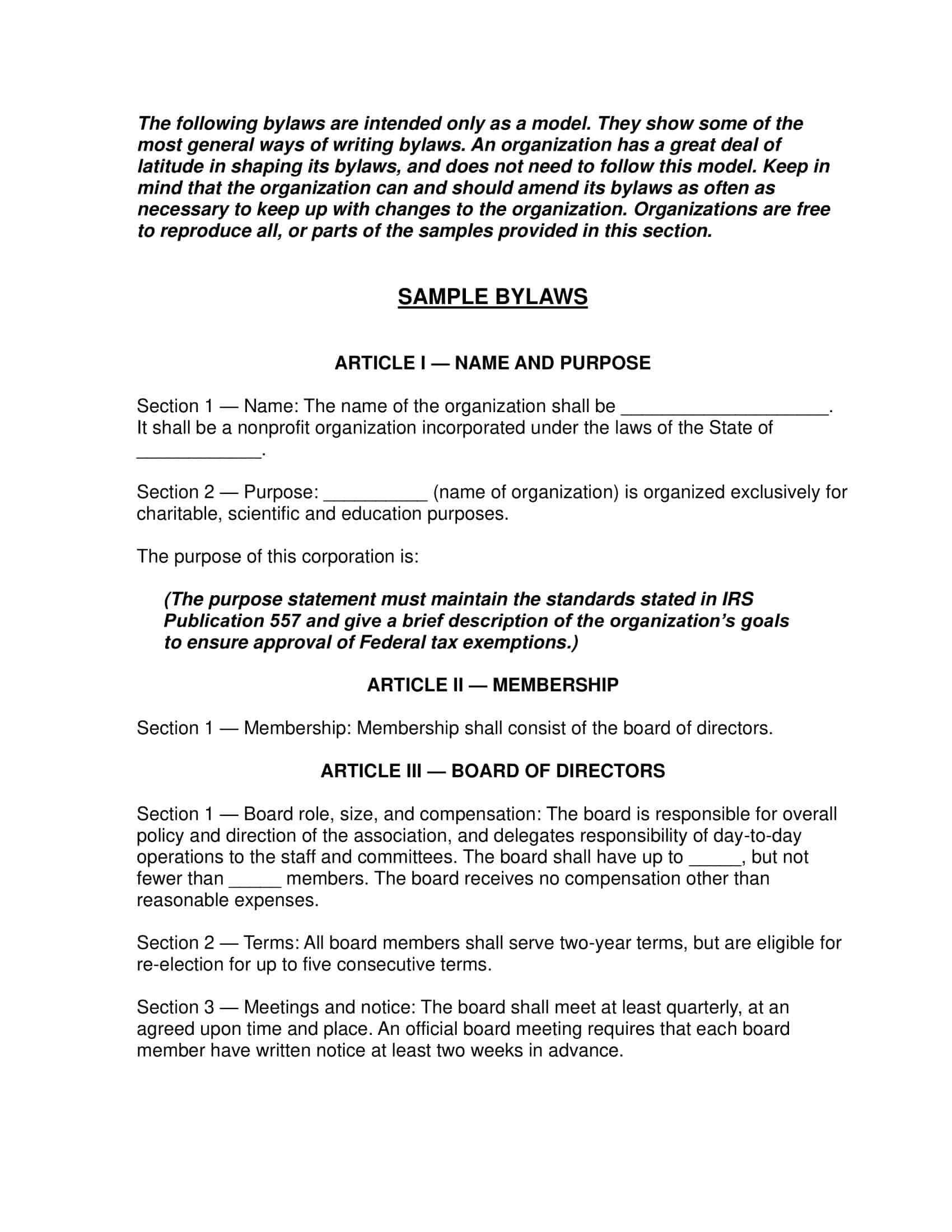




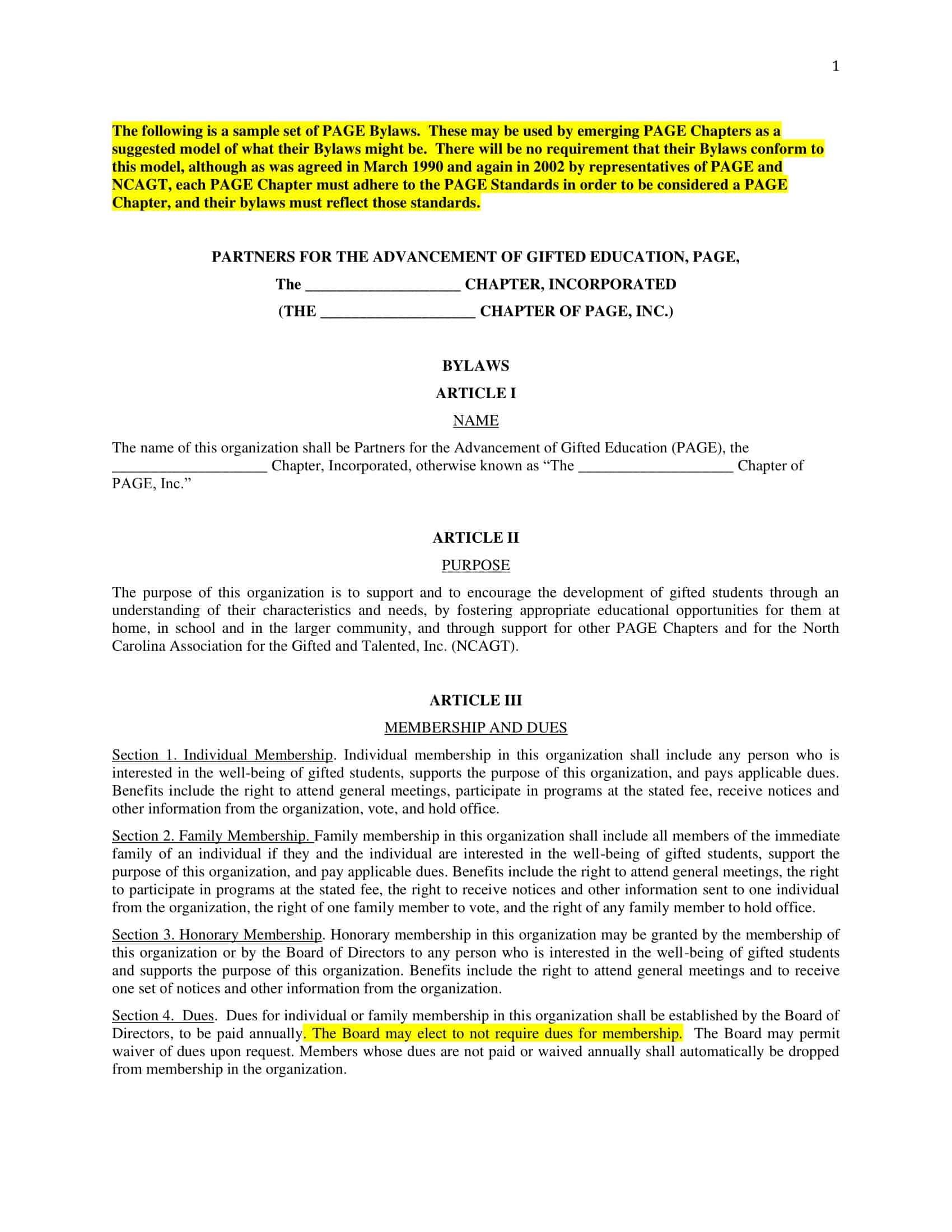


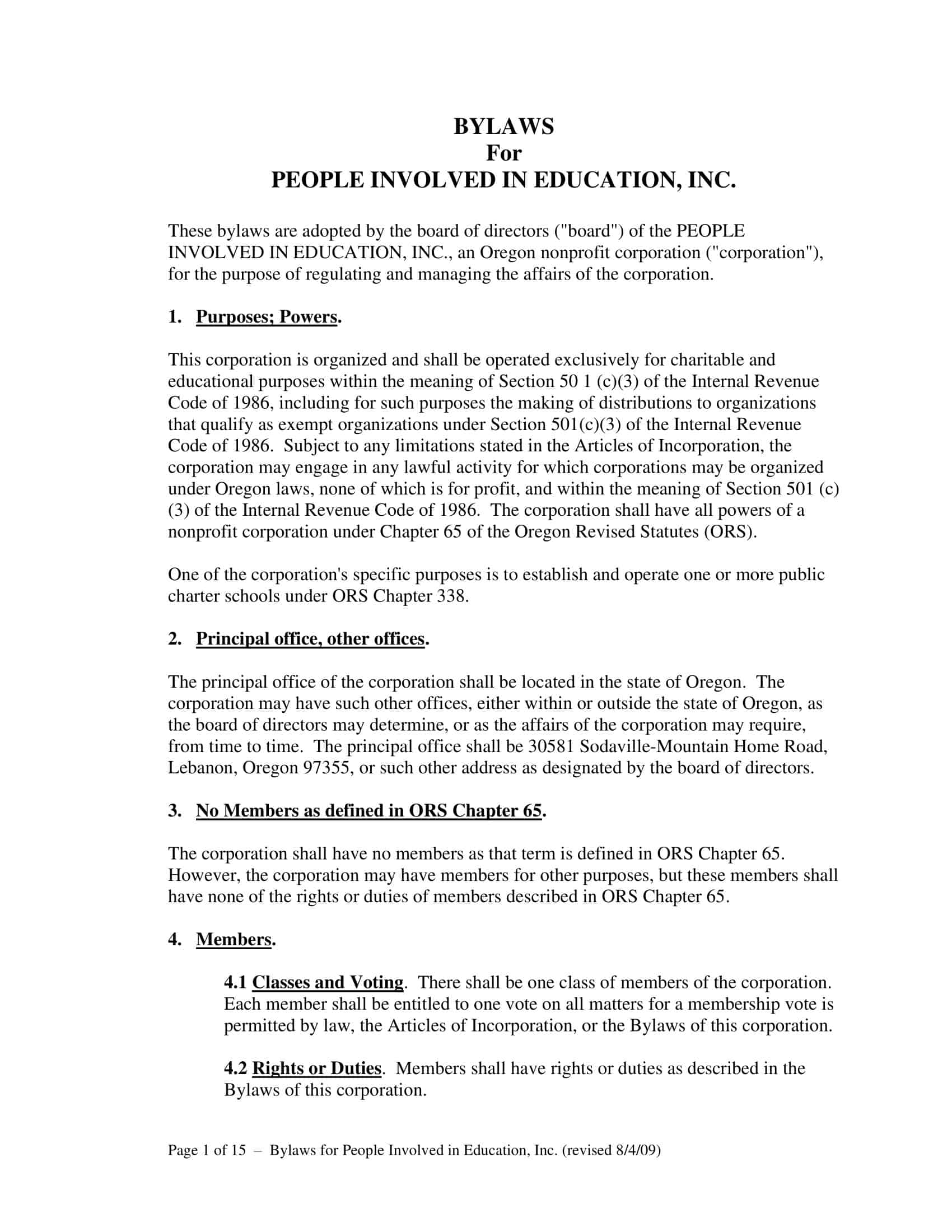
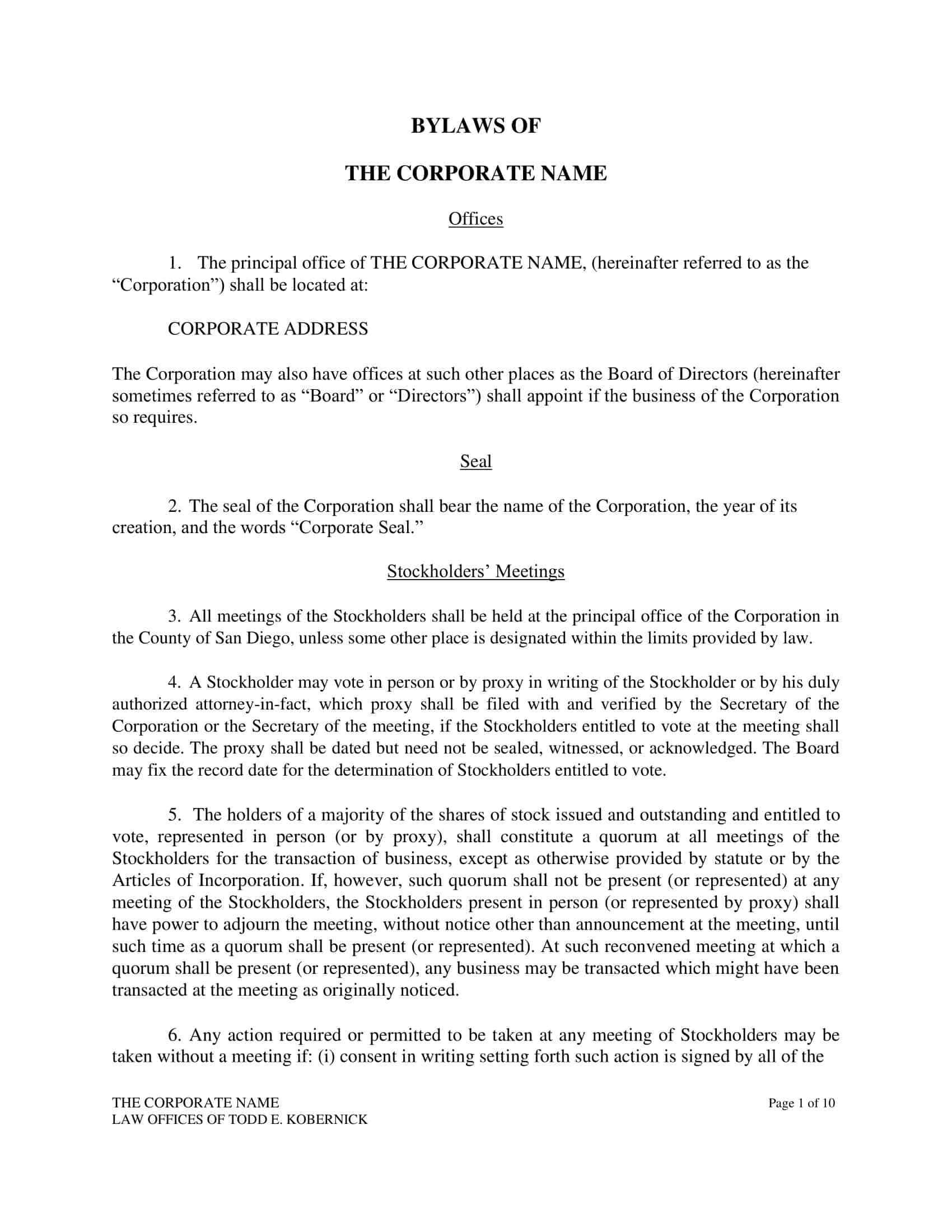







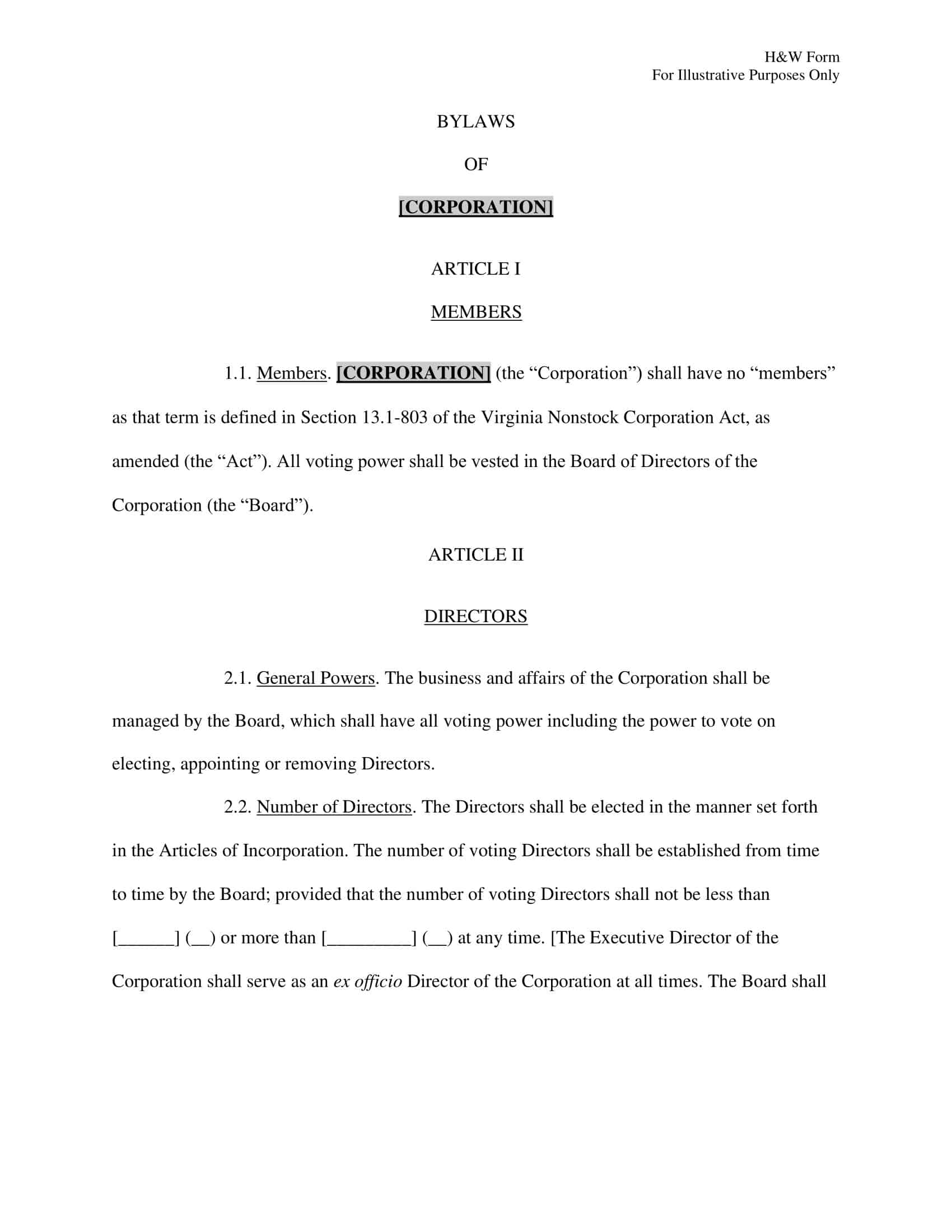


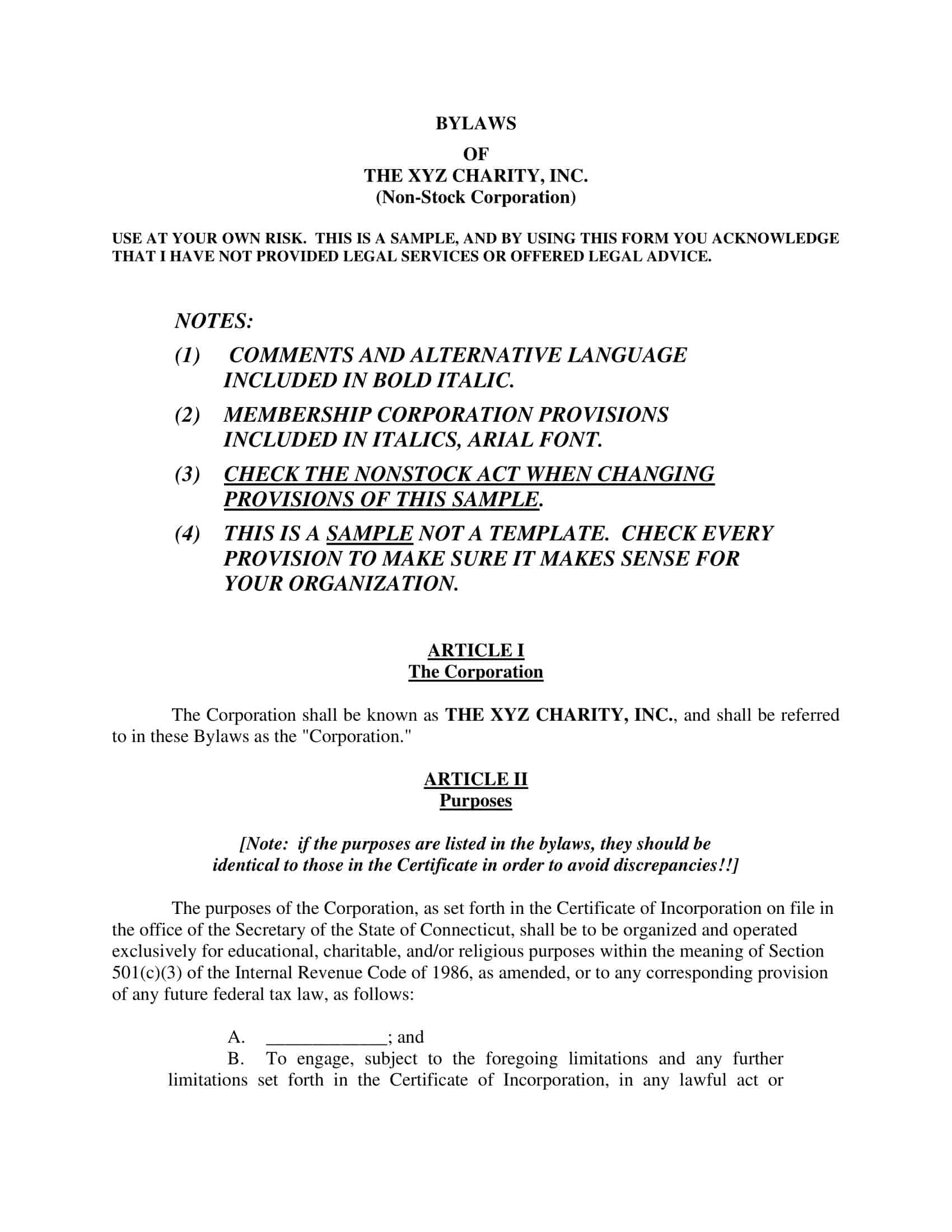

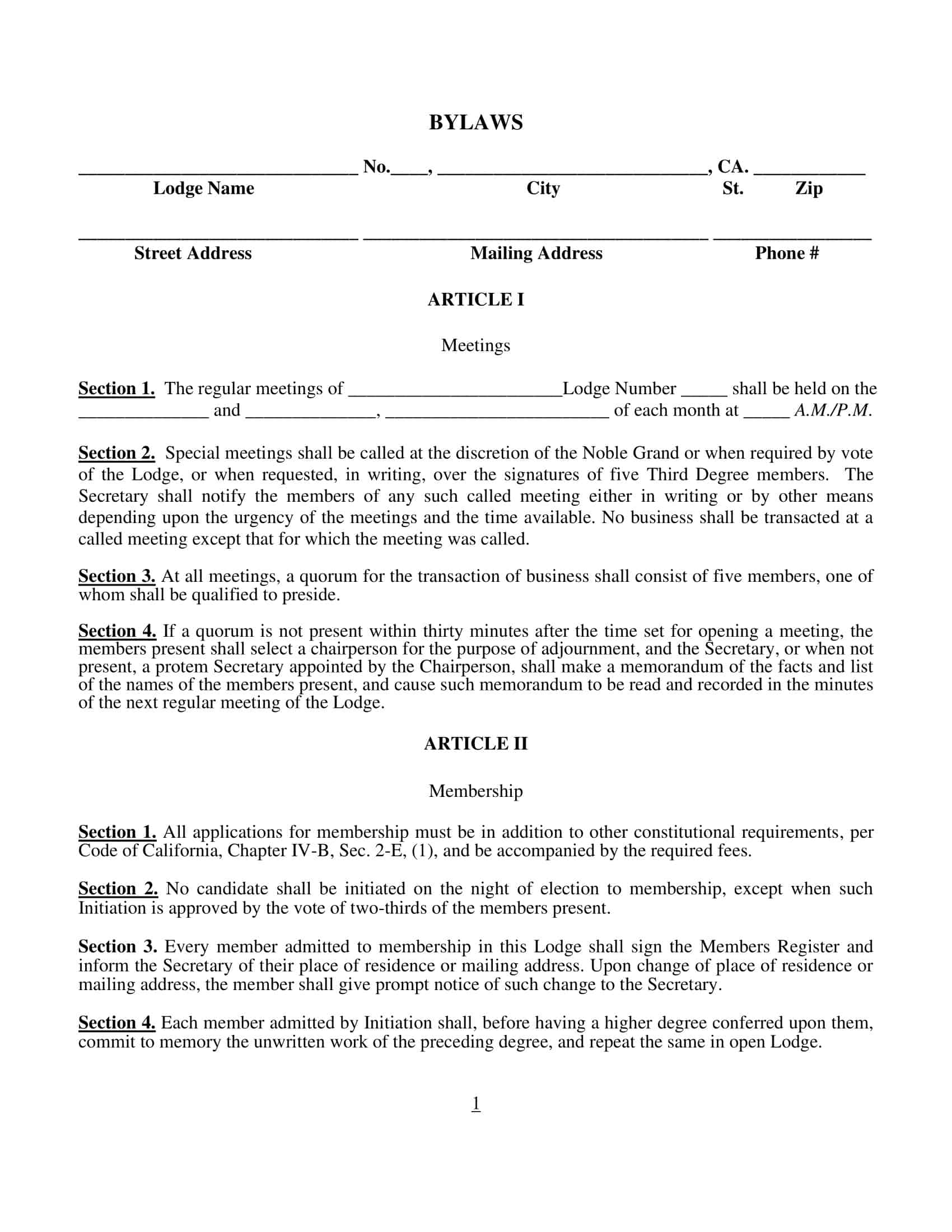

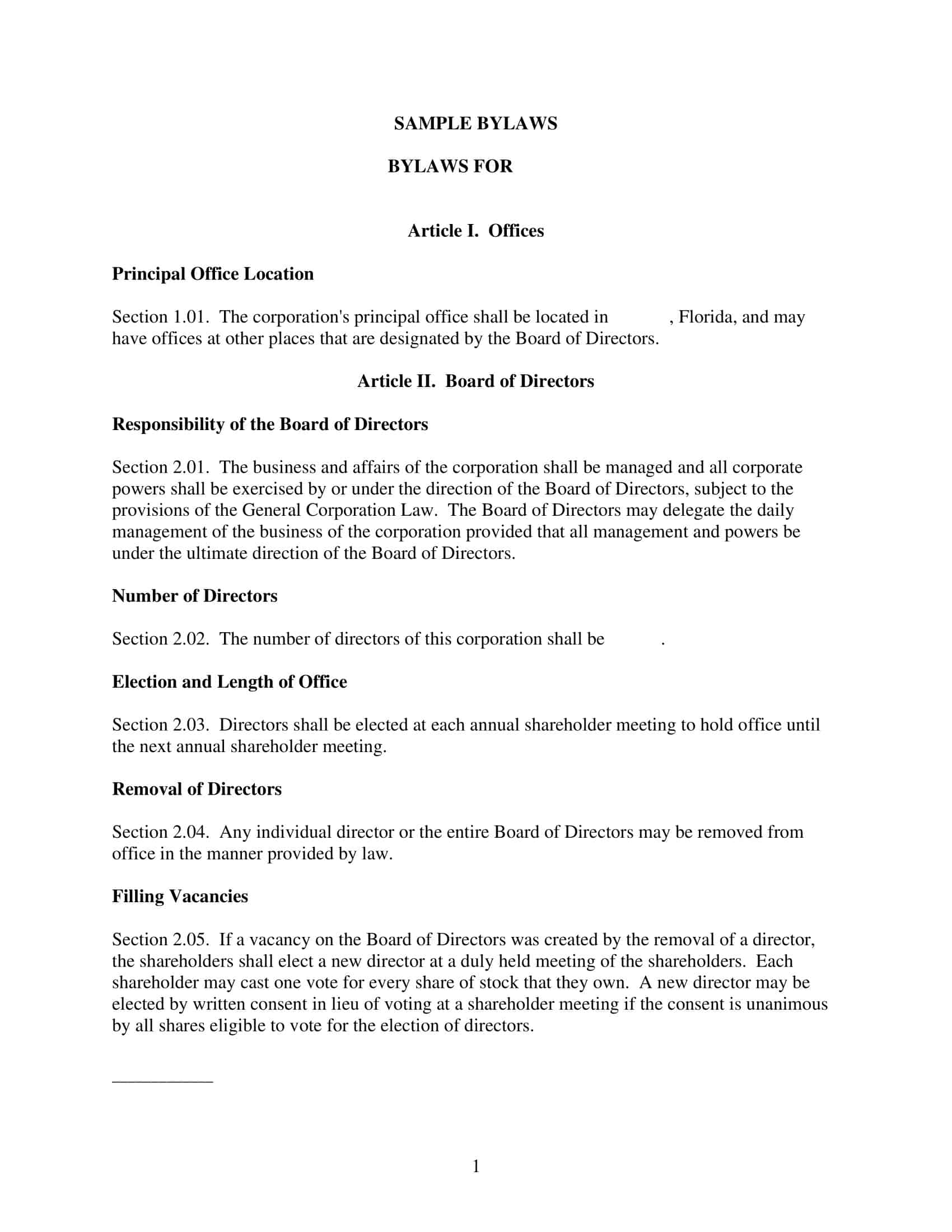
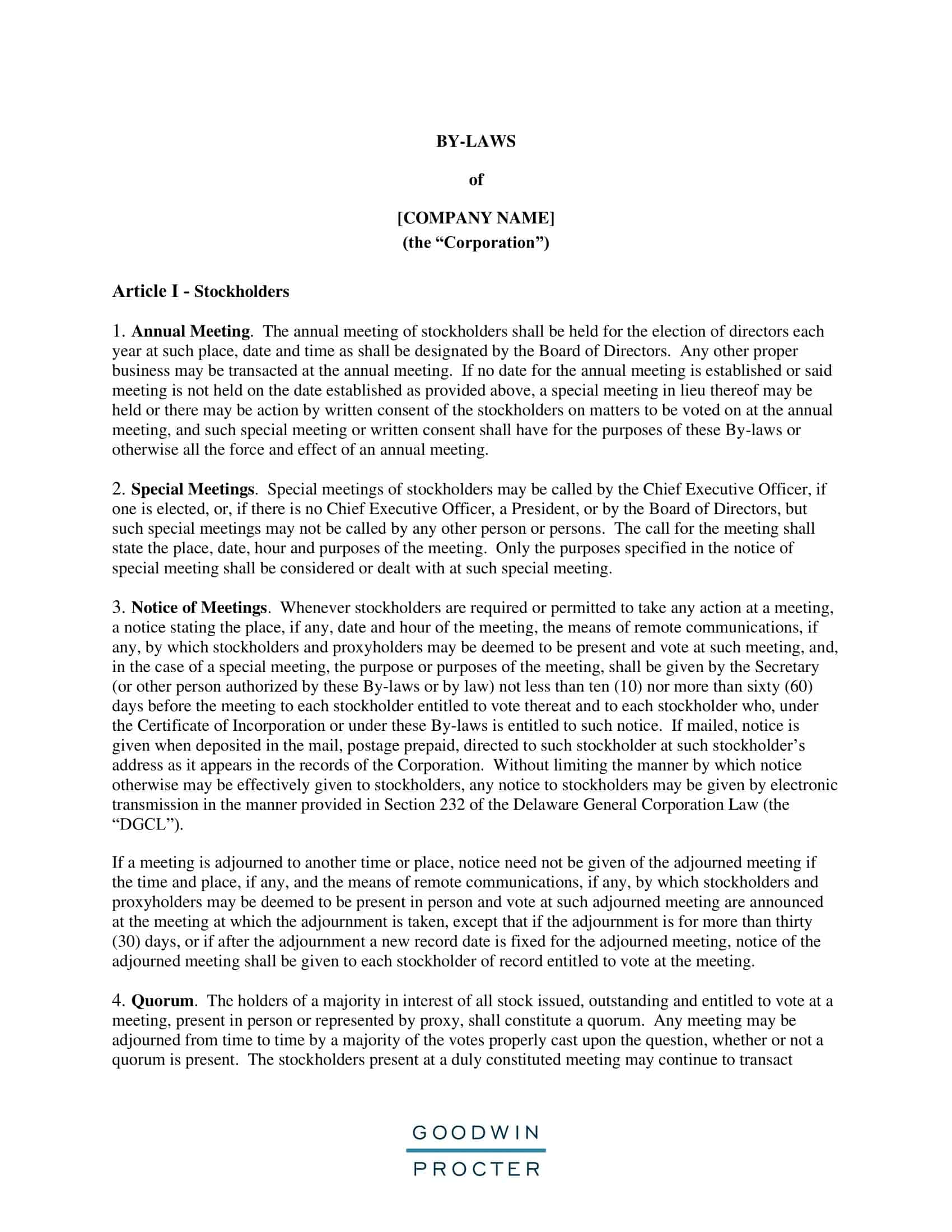




![Free Printable Roommate Agreement Templates [Word, PDF] 1 Roommate Agreement](https://www.typecalendar.com/wp-content/uploads/2023/06/Roommate-Agreement-150x150.jpg)
![Free Printable Credit Card Authorization Form Templates [PDF, Word, Excel] 2 Credit Card Authorization Form](https://www.typecalendar.com/wp-content/uploads/2023/06/Credit-Card-Authorization-Form-150x150.jpg)
![Free Printable Stock Ledger Templates [Excel,PDF, Word] 3 Stock Ledger](https://www.typecalendar.com/wp-content/uploads/2023/08/Stock-Ledger-150x150.jpg)
